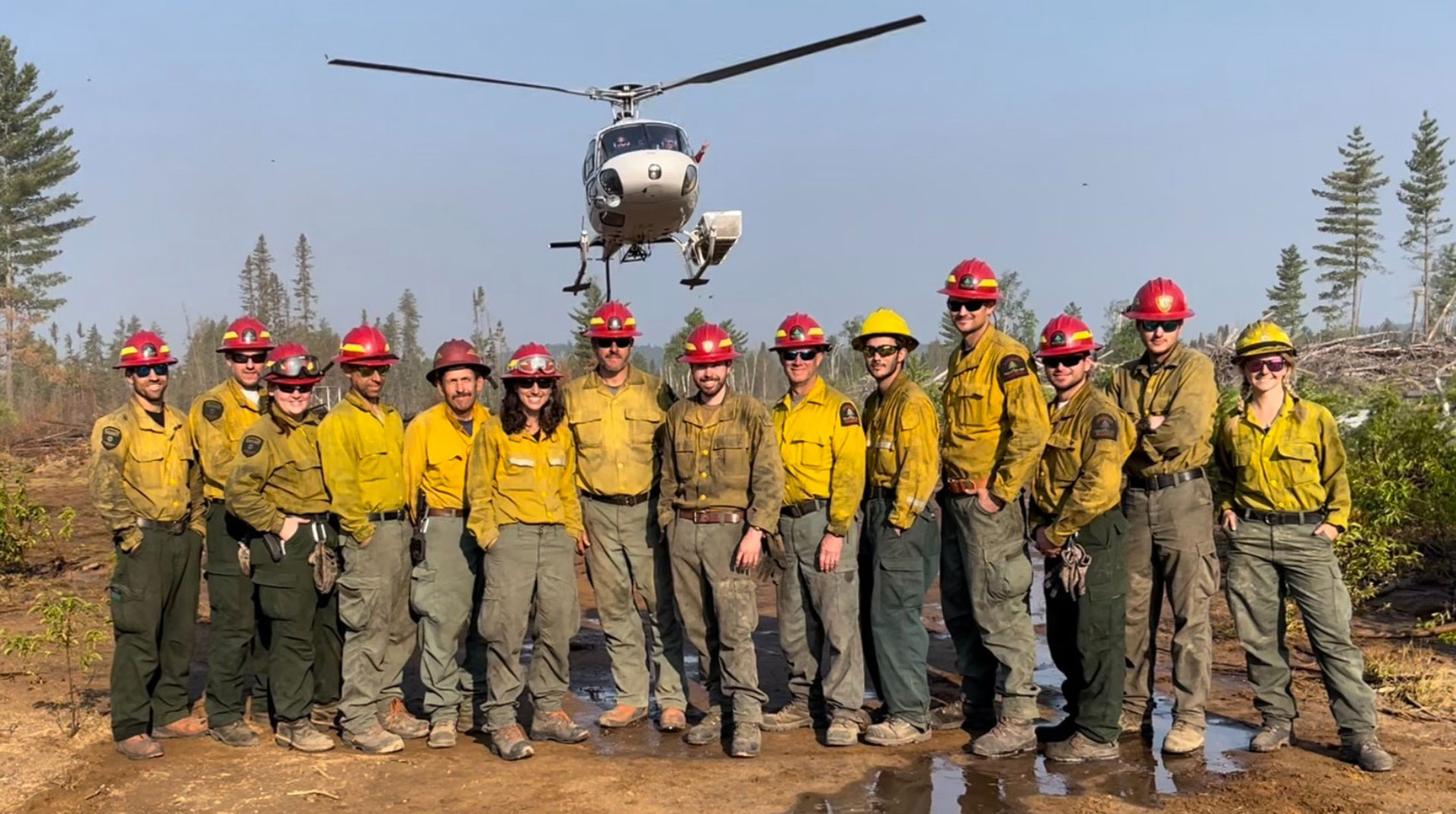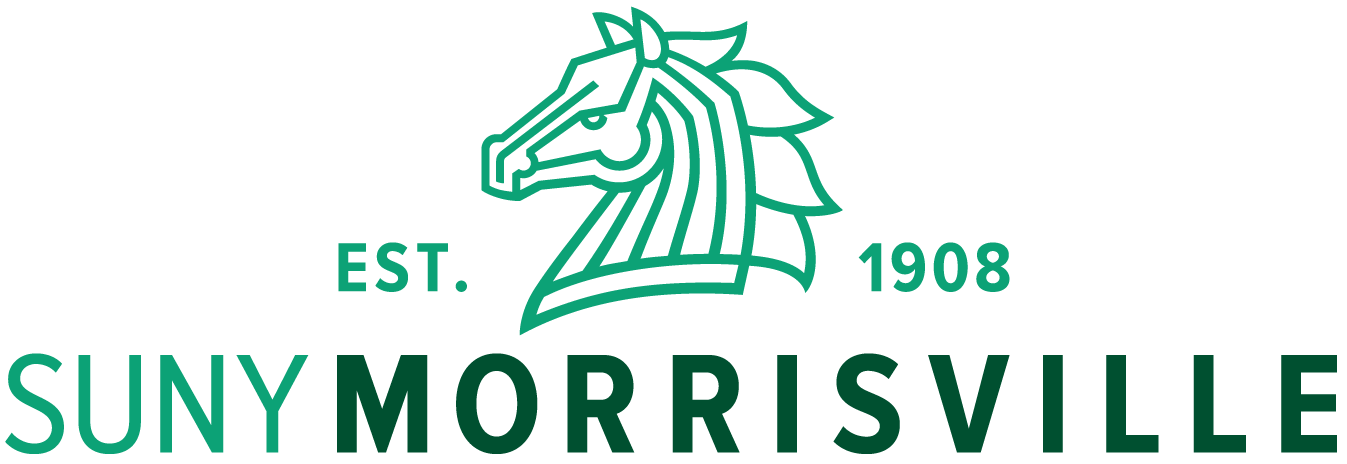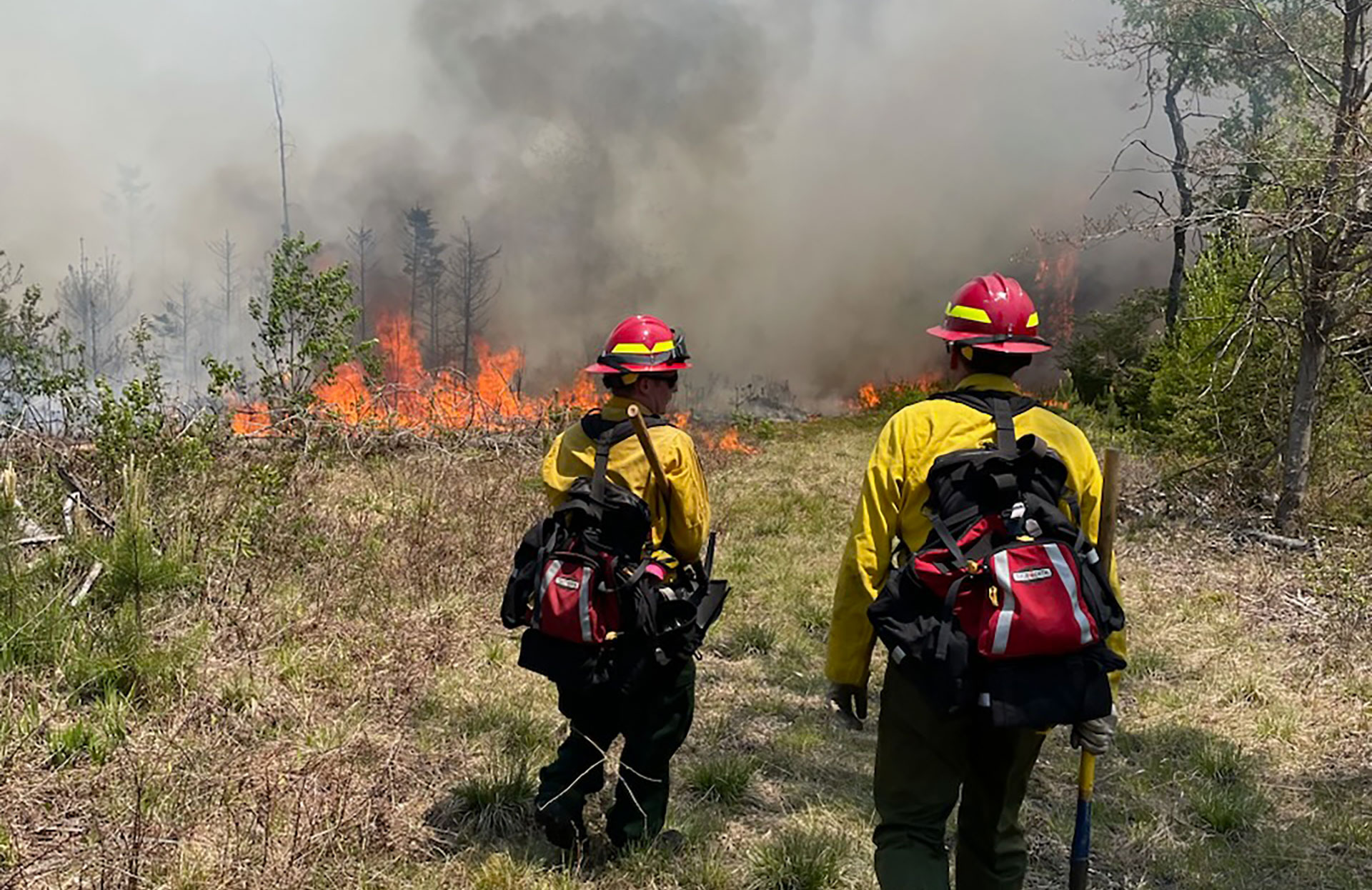Chris Pelrah ’06 and his wife were hiking in the Adirondacks when they came upon a forest ranger heading out to check on a complaint.
“There was some bear activity with people camping in the High Peaks area and the bears were getting into people’s food,” Pelrah said. “I remember the feeling I got — of the ranger helping others — and doing so outdoors. It was an interaction that changed my life.”
He set his sights on becoming a forest ranger for the New York State Department of Environmental Conservation (DEC), leaving behind his career as a scientist solving environmental issues.
“It was a way I could enjoy the outdoors and help others — something I truly love,” said Pelrah, a graduate of SUNY Morrisville’s associate degree in natural resources conservation and bachelor’s degree in renewable resources management (now named environmental & natural resources management).
It’s a rewarding career and lifestyle for the wilderness first responder whose noble calling takes him on search and rescue missions, has him rendering first aid to injured campers and hikers, preventing and suppressing wild fires, acting as a steward of public land, and as a sworn police officer, enforcing state laws.
Last summer, it took him to Maniwaki, just north of the border into Quebec, where he helped fight fires during a record-breaking wildfire season that ravaged a hopscotch path across Canada and focused the world’s attention on the perils of climate change.

Pelrah had been on the job for only one year when he answered a canvas letter to be part of a 14-day mission to help with the blazes that poured smoke into the United States and crossed the Atlantic into Europe. It is the first time New York State forest rangers had been deployed to Canada since 2005 to help contain wildfires in Quebec.
“I was excited and happy to help when our neighbors to the north needed it,” Pelrah said. “I was also excited to gain experience and improve skills that I could bring back home.”
On June 10, 2023, his 14-member squad of DEC volunteers joined crews in the quest to contain aggressive fires that burned wasteland and trees for thousands of miles.
Due to the terrain, vegetation and elevation in Canada, many fires are fought via helicopters, which dump water collected in buckets from lakes.

Pelrah’s team was among those on the ground. Traveling by helicopter, they were dropped deep into the forest to attack flames and suppress hot spots.
Their view from the skies was immense trees, some 30- to 40-feet, torching into flames. It was a first for Pelrah, who had only suppressed small ground fires in training.
“Your adrenaline is definitely racing,” Pelrah said. In some areas, flames raced through the woods and thick black smoke moved more than 30 miles in a day, prompting frantic evacuations.
His team battled four land fires, none of which involved structures, about 100 miles from villages and 30 miles from the road.
Generally, forest rangers carry a field pack filled with head lamps, a hand saw, medical kit, compass, phone with a GPS app, and whatever is needed for the response — like rope gear and a harness. During their mission in Canada, they carried portable pumps, 100-foot sections of hose and hand tools, all weighing nearly 50 pounds, as well as water and food for their 12-hour shifts.
Using a hose and pump, they extinguished hot spots, dug out areas to stop the fire from spreading and stripped out old growth which could easily catch on fire.
As the first firefighters to engage and attack, they successfully extinguished three of the fires. The fourth, which started as 15,000 acres, crept out of control and forced their evacuation by helicopter.
“It’s pretty grueling, but it is surprising how much you can physically endure,” Pelrah said of the work that often involved battling 90-degree heat with 10- to 15-mile-per-hour winds that left them physically and emotionally drained.
“We built strength off of each other,” Pelrah said. “You watch out for each other. We are all working really hard and maybe you see someone on the line struggling a little, so you help them out knowing you’re going to be struggling and they will be there to help you.”
At night they sorted their gear for the next day. “We had to be ready at all times,” he said of his squad, which slept in a bunkhouse with water and electricity.
The wildfires led to the mobilization of more than 1,500 international firefighters from across the world, according to the Canadian Interagency Forest Fire Centre, with help arriving from the United States, Australia, New Zealand, South Africa, Costa Rica, Chile, Spain, Portugal, France and Mexico.
Pelrah’s vast training prepared him for the mission as well as many different scenarios, while testing his physical endurance and ability to respond under pressure.

“Our training is too intensive to have fear,” Pelrah said. “They stress so many things through ranger training that taught us to deal with things so when it’s real, it’s just like practice. You learn so much about how to battle these types of fires. It involves so much critical thinking and leadership skills.”
Those skills are being put to the test with new challenges and pressures that apply to the job of a forest ranger today, namely climate change, which is increasing the frequency of natural disasters, with fires, flood and drought.
At Home
At home, Pelrah’s assigned region, along with two other forest rangers, takes him across 210,000 acres of land managed by the DEC, covering the majority of the New York State towns of Remsen, Forestport and Booneville in Oneida County, and the towns of Webb, Northern Ohio and Northern Russia in Herkimer County. It also includes wilderness, wild forests and state forests, and parts of the Black and Moose rivers.
It wasn’t the career Pelrah started out to pursue. While attending orientation for SUNY Morrisville’s journalism program, he was drawn to one of Professor William Snyder’s interactive natural resources conservation labs.
“When Professor Snyder told me more about the program, I was sold,” Pelrah said. “It hit home that this is what I wanted to do.”
Snyder has been a driving force in his career.
“Professor Snyder is one of those teachers who I really connected with,” Pelrah said. “He was always pushing you to do better. He was passionate about us learning and that passion was contagious.”
When Snyder posted a Civil Service Exam notice on social media, it piqued Pelrah’s interest.

“I was already thinking about different ways to get out of consulting and I recalled that ranger at the Adirondacks, as well as other experiences, and it just clicked that this is something I needed to pursue,” Pelrah said.
After he graduated with two degrees from SUNY Morrisville, Pelrah worked as a scientist at Anchor QEA, an environmental consulting firm in Syracuse, New York, working on remediation cleanup projects in places like Onondaga Lake and the Hudson River. He also worked seasonal jobs at the New York State Canal Corporation and as an assistant forest ranger at Stillwater Reservoir in the Adirondacks.
Pelrah took the forest ranger exam in 2019, but his application process was put on hold when the COVID-19 pandemic hit. In the meantime, he was laid off from his remediation job — an additional sign for him to follow his intrinsic nature to help others.
He completed 29 weeks at the Basic School for New York State Forest Rangers, where recruits practice water rescues in rapids, scale cliffsides and train for helicopter hoist operations, and learn a wide range of rescue techniques, including rope rescues and extensive training in wildfire suppression, prescribed burns, water rescues and wildlife protection. Land navigation and search and rescue, and law enforcement techniques were also part of training.
Pelrah traces everything back to SUNY Morrisville, where he started building his skills in labs and the classroom.
“Morrisville set me up for everything I have done so far in my career,” he said. “I hone those skills every day.
“There was so much hands-on and applying scenarios in the field,” he added. “Morrisville gave me the ability to think outside of the box, to think on my feet, and think about what resources are available and how to apply them.”
“Morrisville set me up for everything I have done so far in my career. I hone those skills every day.
He keeps his skills sharp with ongoing DEC training for rescue, first aid and firefighting.
While there is no such thing as a typical day in the career of a forest ranger, it is one of the appeals of the job for Pelrah.
“I get in my vehicle and every day it is something different,” he said.
His job also provides him the opportunity to do public outreach and education, visit schools to talk to students about a forest ranger’s job and teach search and rescue, and wildland fire suppression courses.
Pelrah looks back at his experience last summer as an opportunity to gain new skills and bond with fellow first responders.
“I enjoyed building relationships with coworkers from other regions in the same state so when we respond to an incident together, there is already a foundation of working together,” he said.
The DEC patch Pelrah wears proudly on his shoulder is a daily reminder of his ongoing dedication to sharing his love and enthusiasm as a forest ranger with others.
“I have an opportunity to help people. I get to go to work every day to help protect people and the environment,” he said.
Basic Training
Forest Ranger recruits are required to spend approximately six months in a residential academy setting taking courses and learning the skills as required by the position. Recruits receive the basic school training required of all NYS police officers such as Criminal Procedure Law, Penal Law, Vehicle and Traffic Law, defensive tactics, physical training and wellness. They also receive specialized training in wildland search and rescue, wildland fire, incident management, Wilderness First Responder, swift water rescue and state land protection. Following graduation from the basic school, they go to their permanent field assignments across the state, where they are mentored by senior forest rangers in a monitored field training program for six to eight weeks.


